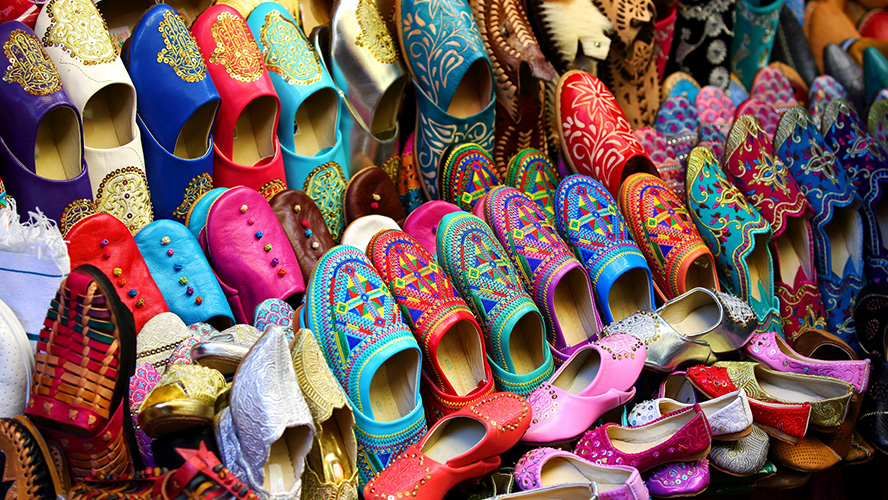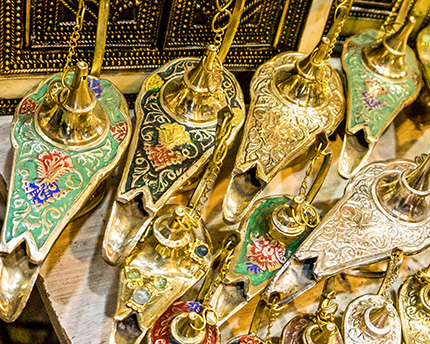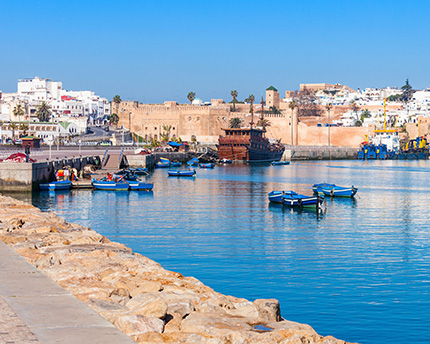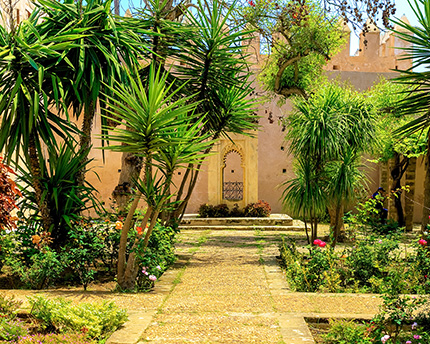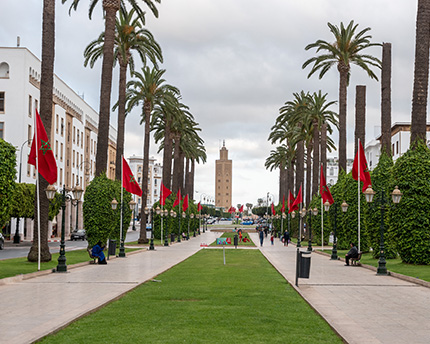The Gold Souk, or Souk es Sebat, is a paradise for jewellery lovers and one of the most attractive places for tourists in Rabat. Located in the medina, next to the Kasbah of the Udayas, this is where most of the city’s jewellers are concentrated and can be seen working with gold, silver and precious stones. They sell their items to visitors at prices that are lower than in Europe in their small shops set among cobbled streets and overlooking the river.
The Gold Souk, covered with a reed roof, offers jewellery, of course, but there are also lamps, all types of ornaments, carpets, babouches, and leather garments and footwear. You can buy many products at the Kasbah of the Udayas, a fortified quarter and a charming enclave surrounded by blue and white houses and beautiful gardens. The most curious thing about the neighbourhood is its Andalusian architecture, which can be seen especially in the doors of the houses.
History of Rabat’s Souk
Rabat’s Souk, built in the 12th century by the Almohads, has always been a point of attraction for locals and visitors alike, who look for curious shops in this distinctive part of the city. The Gold Souk is dotted with small shops where you can feel the true identity of Moroccan jewellery craftsmanship. It is a narrow, cobbled market with colourful shop windows from which you can watch the jewellers creating their designs.
Remember that haggling is almost a must in Moroccan markets. Near the souk, you can visit the Udayas Museum, which displays art pieces and traditional objects that define the essence of Morocco.
Shopping at the Gold Souk
What items can be bought at Rabat’s Gold Souk? There is a large variety of traditional and handcrafted items that you can buy at Rabat’s Gold Souk, most of which are designed with gold, silver and precious stones. Nevertheless, there are also other souks with different products nearby. In addition to the jewellers, Rabat’s souk has other areas of interest such as the street with fruit and the street with coloured fabrics.
Hand-crafted goods
In the medina you will find an infinite range of babouches, a type of footwear of oriental origin. You can watch the artisans making their products. You will also find potters, wood and leather craftspeople, as well as a large variety of basketry and costume jewellery.
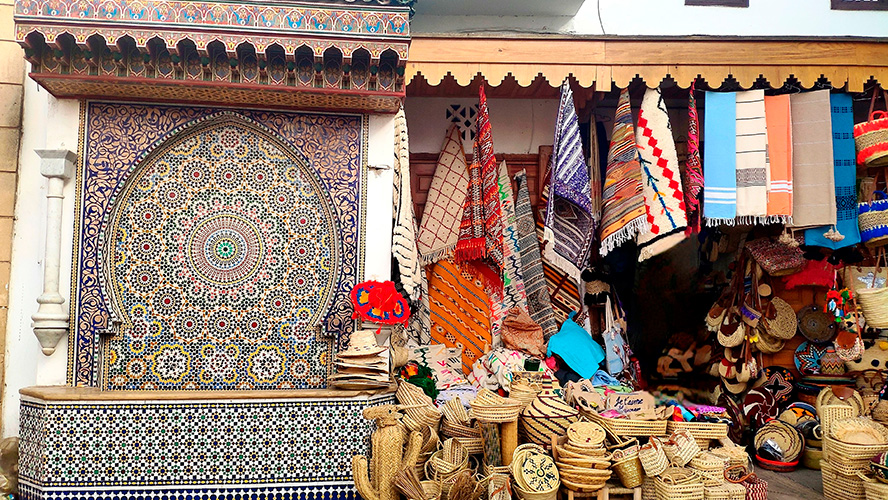
Textiles
You will find an extensive variety of leather garments, wool jackets, coats, skirts, scarves, djellabas, etc. Other typical products are the beautifully coloured carpets.

Food and spices
Here you’ll find oranges, watermelon, melon, vegetables and strings of onions, together with every dried fruit and nuts: figs, almonds, peanuts, etc. People often buy spices, particularly saffron, oregano and cumin, or mixes used to make the typical “pincho Moruno”.
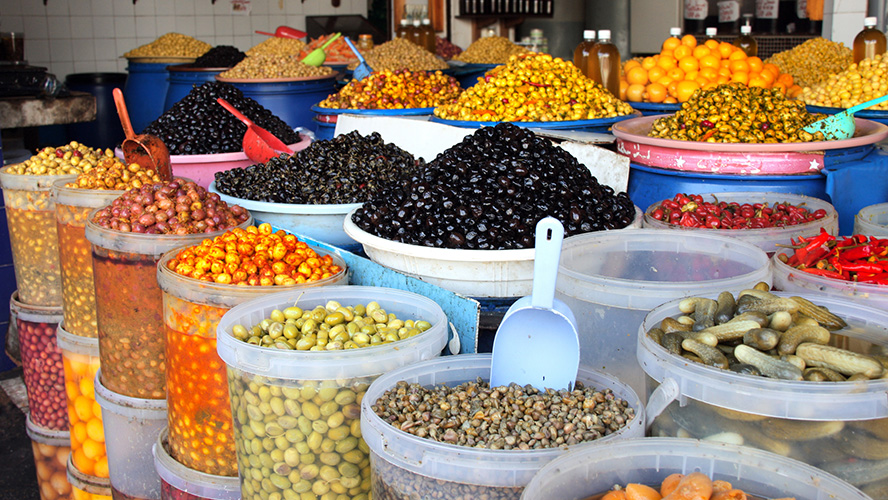
Tips for visitors
When you go shopping in Rabat’s souk, located at the end of Souika Street, overcome your prejudices. Let yourself go and take your first steps in the world of haggling when buying. But make sure you really want one of the assorted products on offer – you’re sure to be tempted by their prices, colour, textures and sheen. If you are not sure, it is better not to ask, because the traders will insist again and again until they achieve their goal. Many traders will also speak to you in your language, which is certainly appreciated.
Other souks in Rabat
They say that the souk in Rabat is one of those that has best preserved its essence and has not been affected by tourism. In fact, there are not many tourists in this souk, so there are not too many souvenir shops, but rather shops selling products tailored to the locals, from food to clothing. In general, the souk is organised according to specialities: babouches, clothes, spices, nuts, etc. The souk is also the centre of social life.
